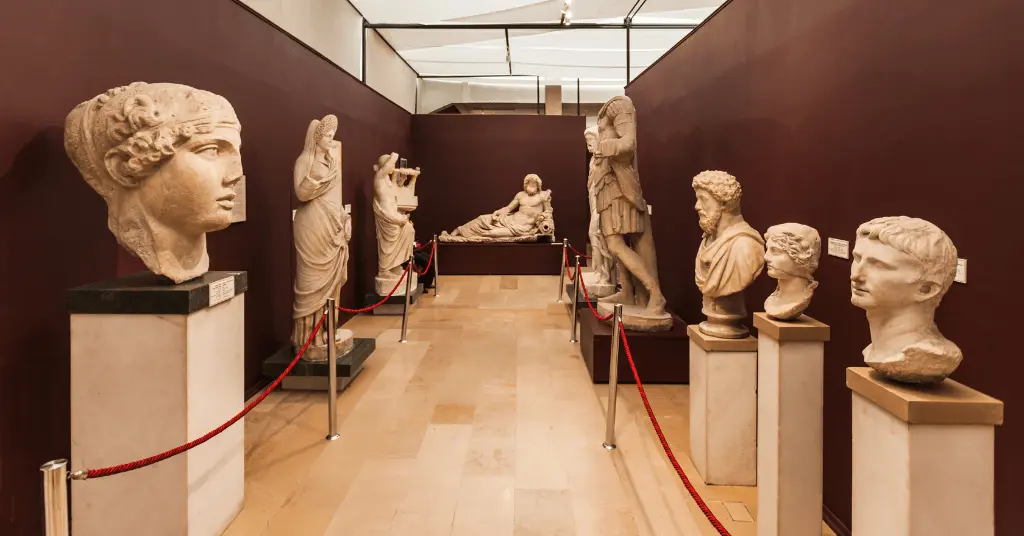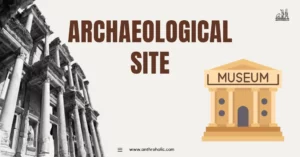AI Answer Evaluation Platform Live Now. Try Free Answer Evaluation Now
History of Archaeology
Archaeology is receiving more scholarly attention. Archaeologists use a range of methods, including geophysical prospecting and radioactive carbon dating. The humanities, especially history and art history, have a considerable impact on the field and even advance it. However, it is very precise and complicated at its core. Archaeology hasn’t always been reliable, however. It hasn’t always been a science, in fact.

The development of archaeology in Europe began in the 15th and 16th centuries as a result of greater collection and humanism, a logical ideology that gave the arts a high priority. Instead of seeing them as historical objects, the enquiring elite of the Renaissance gathered antiquities from ancient Greece and Rome.
Sponsored excavations and the growth of classical archaeology eventually resulted from the hunt for artifacts and a desire to learn more about the past. One of the motivating factors for the excavation of Herculaneum and Pompeii, the two famed cities that the eruption of Mount Vesuvius in A.D. 79 both devastated and preserved, was the queen of Naples’ infatuation with antique sculptures.
After Napoleon Bonaparte’s conquest of Egypt in 1798, archaeology entered a new era. In order to comprehend the Egyptian people and their history, Napoleon traveled with the Scientific and Artistic Commission, also known as the Institute of Egypt, a think tank of 175 scholars. A portable library, measurement equipment, and devices for measuring items were all part of the arrangement. The 1809 publication of an illustrated “Description of Egypt” by academics and scientists ignited a lifetime love affair with the country. By deciphering the Rosetta Stone’s code in 1822, Jean-François Champollion made it possible for everyone to have access to the meanings of the ancient Egyptian hieroglyphics.
Excavations at Herculaneum and Pompeii
Up to the second phase, the majority of the early excavations at Pompeii and Herculaneum were either various types of religious crusades or treasure hunts by and for favored rulers.
During the early 18th-century excavations at Herculaneum, which were primarily a treasure hunt, elements of the entire Herculaneum ruins that had been buried beneath some 60 feet of volcanic ash and muck 1500 years earlier were leveled. At Charles of Bourbon’s request, Marcello Venuti, an archaeologist, reopened the tunnels at Herculaneum in 1738. The founder of the House of Bourbon and ruler of the Two Sicilies was Charles of Bourbon. The inscription led Venuti, who directed the excavations, to conclude that the location was Herculaneum. He wrote A Description of the Early Discoveries of the Ancient City of Heraclea in 1750, and it is still available. Another well-known structure that belonged to Charles of Bourbon is the Palazzo Reale in Caserta.
The Original Digger
It has been more than 150 years since archaeology was acknowledged as a legitimate scientific discipline. But people have been interested in history for far longer. The Sphinx, which was initially erected for Pharaoh Khafre in Egypt’s 4th Dynasty (approximately 1550–1070 BCE), was unearthed and repaired, if you pushed the notion far enough (Old Kingdom, 2575–2134 BCE). Yet, old ivory carvings and observable signs of the reconstruction show that the Sphinx was completely buried in sand before the New Kingdom excavations. As there are no written records to support the excavation, we are unable to determine which New Kingdom pharaoh gave the order for the Sphinx’s restoration.
According to the Early Archaeologists Tradition, Nabonidus, the last king of Babylon, who ruled from 555 to 539 BCE, conducted the earliest known archaeological dig. The discovery of the building’s foundation stone, which honors Naram-Sin, the grandson of Akkadian ruler Sargon the Great, is Nabonidus’ contribution to historical knowledge. Nabonidus assessed the founding date of Naram Sim to be 1,500 years earlier than the time when it reached its height, which was 2250 BCE. Radiocarbon dating may begin as early as the middle of the sixth century BCE. Simply put, Cyrus the Great, who established Persepolis and the Persian empire, eventually overcame Babylon because Nabonidus was insane (a lesson for many contemporary archaeologists).
The current equivalent of Nabonidus would probably be the unsuccessful British native John Aubrey (1626–1697). About 1649, he found the Avebury stone circle and finished the first working Stonehenge design. He was fascinated with stone circles, and over the course of 30 years, he spent scouring the countryside of Great Britain, from Cornwall to the Orkney Islands, in search of and photographing every single one of them. In his opinion, the stone circles were the work of druids.
Archaeology Today
Together with geology and biological research, scientific archaeology started to advance in the 19th century. Archaeologists may utilize uniformitarian stratigraphy, a modern geology technique, to date artifacts. Charles Lyell contributed to its popularization. The broad acceptance of the idea of evolution was aided by The Origin of Species and subsequent writings by Charles and Lyell Darwin. The idea that people have been on Earth for a very long time has had a tremendous impact on ancient archaeology.
With the publication of Flinders Petrie’s “Methods and Aims in Archaeology” in 1904, which outlined a methodical approach to excavation, the 20th century saw tremendous advancements in the subject. Archaeology has grown more glamorous as a result of important discoveries like King Tutankhamen’s tomb in 1922 or the Royal Tombs at Ur in 1926, which brought the whole extinct Sumerian civilization to life. Archaeology as a discipline started to develop when researchers started to do research outside of the Near East, the Mediterranean, and Europe.
Who brought the methodology of excavation?
With the publication of Flinders Petrie’s “Methods and Aims in Archaeology” in 1904, which outlined a methodical approach to excavation, the 20th century saw tremendous advancements in the subject.
How archaeology laid out its foundation in Europe?
The development of archaeology in Europe began in the 15th and 16th centuries as a result of greater collection and humanism, a logical ideology that gave the arts a high priority. Instead of seeing them as historical objects, the enquiring elite of the Renaissance gathered antiquities from ancient Greece and Rome.
Which is the leading factor in laying out the foundation of excavation in archaeology?
Sponsored excavations and the growth of classical archaeology eventually resulted from the hunt for artifacts and a desire to learn more about the past. One of the motivating factors for the excavation of Herculaneum and Pompeii, the two famed cities that the eruption of Mount Vesuvius in A.D. 79 both devastated and preserved, was the queen of Naples’ infatuation with antique sculptures.




